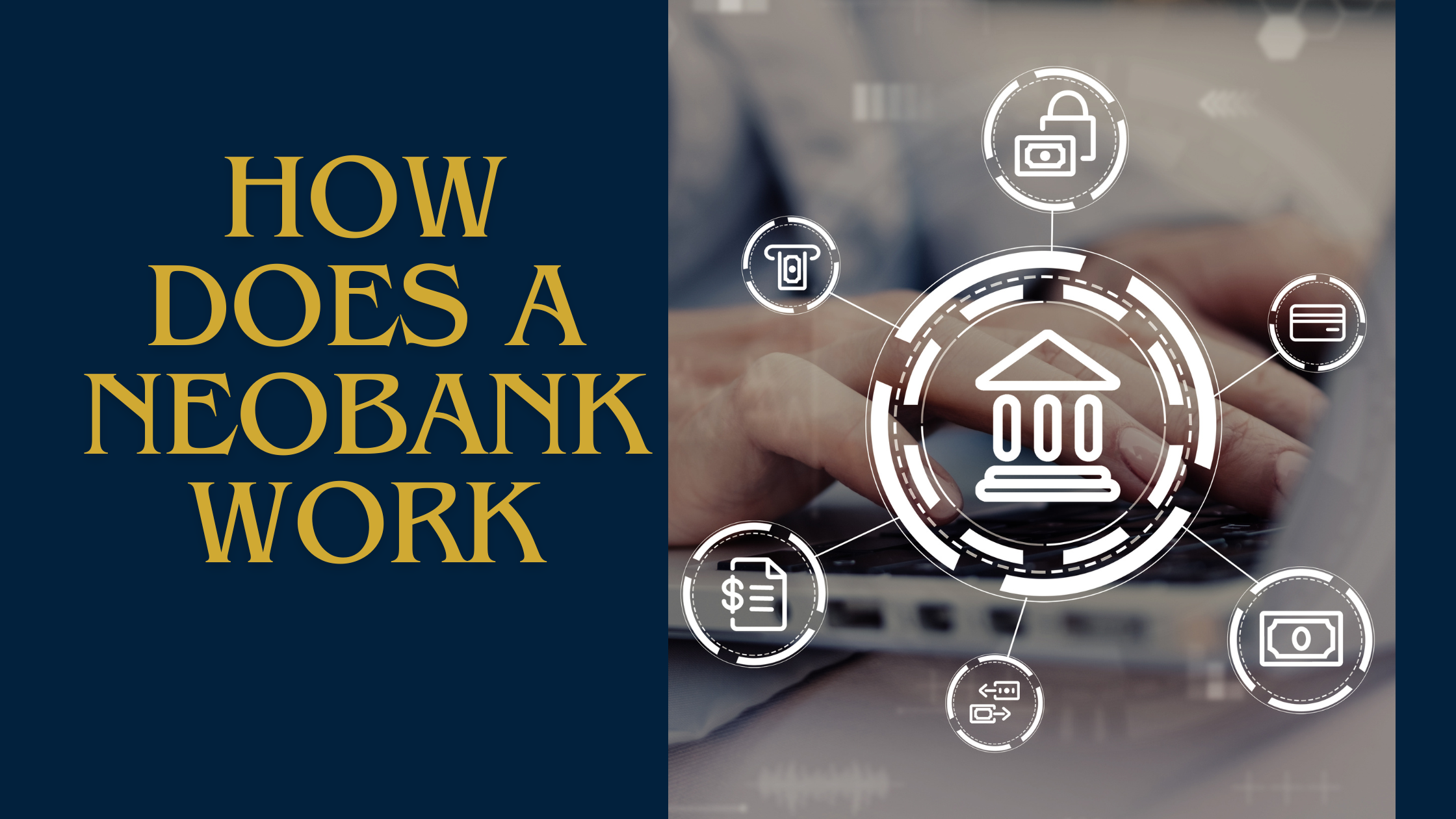In the ever-evolving landscape of finance, the emergence of neobanks has revolutionized the traditional banking model, offering a glimpse into the future of modern financial services. But have you ever wondered, beneath the sleek interfaces and digital transactions, how does a neobank truly operate?
Join us on a interesting journey as we will know mechanics of these innovative financial institutions, deciphering the inner workings that propel them into the forefront of the banking industry. As we navigate through the digital realm of neobanking, unraveling its complexities and unraveling the mysteries behind its seamless operations, a fascinating world unfolds before us.
From virtual branches to AI-driven algorithms, each component plays a pivotal role in reshaping the way we perceive and interact with our finances. So, fasten your seatbelts as we embark on an enlightening exploration, peeling back the layers of this modern banking phenomenon to demystify the question that lingers in the minds of many: how does a neobank work?
Understanding the Concept of Neobanks
Neobanks are a new breed of digital-only financial institutions that operate without physical branches. They provide banking services exclusively through online platforms, offering customers a convenient and streamlined banking experience. The concept of neobanks revolves around leveraging technology to deliver efficient and cost-effective financial solutions.
Understanding how does a neobank work involves grasping the mechanics behind their operations. These modern banks offer a range of services such as online account opening, fund transfers, bill payments, and budgeting tools through their user-friendly mobile apps or websites. By harnessing automation and AI, neobanks can provide personalized financial insights and assistance to their customers.
One of the key advantages of neobanks is their agility in adapting to consumer needs and preferences swiftly. With lower overhead costs compared to traditional banks, neobanks can offer competitive interest rates and fees. This disruptive approach to banking is gaining popularity among tech-savvy individuals seeking innovative financial solutions.
Digital-First Approach: The Core Principle
A digital-first approach is at the core of modern banking mechanics, especially when understanding how a neobank operates. Neobanks leverage technology to provide innovative and efficient financial services, disrupting traditional banking models.
When delving into how a neobank works, it’s crucial to grasp their reliance on digital channels for customer interactions, transactions, and operations. These banks have no physical branches, offering convenience and cost-effectiveness while catering to tech-savvy customers.
Neobanks utilize advanced algorithms and AI to deliver personalized services, streamline processes, and enhance user experience. Through mobile apps and online platforms, customers can open accounts, make payments, and access a range of financial products seamlessly.
By focusing on agility, customer-centricity, and digital solutions, neobanks are reshaping the banking landscape. Their digital-first approach embodies the future of banking, emphasizing accessibility, simplicity, and innovation in meeting evolving customer needs.
Technology Stack Behind Neobanking Operations
The technology stack behind neobanking operations is a crucial element in understanding how does a neobank work efficiently. Neobanks rely on a sophisticated digital infrastructure to provide seamless banking services to customers.
At the core of neobanking operations is a robust cloud-based system that enables real-time transactions and data processing. This technology allows neobanks to offer instant payment solutions and personalized financial insights to users.
Furthermore, neobanks leverage artificial intelligence and machine learning algorithms to analyze customer behavior and improve service delivery. These advanced technologies help in fraud detection, risk assessment, and customer support automation.
In addition, application programming interfaces (APIs) play a vital role in integrating various financial products and services within the neobanking ecosystem. This enables customers to access a wide range of banking services through a single platform effortlessly.
Overall, the technology stack of a neobank is designed to enhance user experience, streamline operations, and foster innovation in the banking sector.
Customer Onboarding in a Neobank
Customer onboarding in a neobank is a crucial process that sets the tone for a customer’s entire banking experience. When exploring how does a neobank work, understanding the onboarding process is essential.
Neobanks streamline customer onboarding by leveraging digital technologies. New customers can sign up online, providing their details and verifying their identity electronically. This quick and efficient process eliminates the need for physical paperwork and in-person visits, making it convenient for customers to join the neobank.
Once a customer completes the onboarding process, they gain access to a range of modern banking services. From mobile banking to budgeting tools, neobanks offer innovative features that cater to the digital-savvy customer.
Customer onboarding in a neobank is designed to be user-friendly and seamless, ensuring that customers can start using banking services quickly and hassle-free. By simplifying the onboarding process, neobanks can attract and retain customers looking for a modern banking experience.
Neobank Products and Services Overview
Neobanks revolutionize traditional banking with innovative products and services. These digital entities operate solely online, offering a range of financial solutions without physical branches. Neobanks provide services like savings accounts, payment transfers, and investment options through user-friendly mobile apps.
Neobank Account Types:
Neobanks offer various account types tailored to different needs, such as personal accounts, business accounts, and even specialized accounts for freelancers or travelers.
Payment Services:
One key feature is seamless payment services allowing users to send money domestically or internationally quickly and securely. Some neobanks also provide unique features like splitting bills with friends or setting payment reminders.
Innovative Savings Tools:
Neobanks promote saving habits through innovative tools like round-up savings, where purchases are rounded up to the nearest dollar, with the spare change deposited into a savings account.
Investment Opportunities:
Many neobanks offer investment opportunities, allowing users to invest in stocks, cryptocurrencies, or ETFs directly from their accounts.
Personalized Financial Insights:
Neobanks provide personalized financial insights and recommendations based on spending habits, helping users make informed financial decisions.
Security Measures in Neobanking
Neobanks implement robust security measures to safeguard customers’ financial data and transactions. Encryption technology is a fundamental element in ensuring data protection. By encrypting sensitive information, neobanks prevent unauthorized access and maintain the confidentiality of user details.
Biometric authentication adds an extra layer of security by utilizing unique biological traits such as fingerprints or facial recognition to verify user identity. This innovative approach significantly reduces the risk of account breaches and identity theft.
Moreover, neobanks employ multi-factor authentication methods, requiring users to provide multiple forms of verification before accessing their accounts. This practice minimizes the chances of fraudulent activities and enhances overall account security.
In conclusion, security is a top priority for neobanks, and they continuously invest in cutting-edge technologies to fortify their systems against potential cyber threats. By implementing encryption, biometric authentication, and multi-factor verification, neobanks ensure a safe and secure banking experience for their customers.
Regulatory Framework Governing Neobanks
Neobanks operate under a specific regulatory framework that governs their operations and ensures compliance with financial laws. Understanding the regulatory landscape is crucial to grasp how neobanks work. These digital-only banks provide financial services without physical branches, leveraging technology to offer convenient and efficient banking solutions.
The regulatory framework governing neobanks includes guidelines related to customer protection, data security, and financial stability. Regulatory authorities closely monitor neobanks to safeguard consumer interests and maintain the stability of the banking sector. Compliance with these regulations is essential for neobanks to operate legally and build trust among customers.
Neobanks must adhere to anti-money laundering (AML) and know your customer (KYC) regulations to prevent financial crimes and verify the identity of their customers. Additionally, they need to comply with capital requirements to ensure financial stability. By operating within the regulatory framework, neobanks can innovate and provide innovative banking services while maintaining transparency and accountability.
Neobanks’ Impact on the Future of Banking
Neobanks are reshaping the traditional banking landscape by offering innovative financial services through digital platforms. Understanding how does a neobank work is crucial in navigating the modern banking mechanics. These financial institutions operate solely online, providing customers with convenient access to services such as account management, payments, and transfers.
One key aspect of neobanks is their user-friendly interfaces, which simplify the banking experience for tech-savvy consumers. By leveraging technology, neobanks can offer lower fees and higher interest rates compared to traditional banks. This cost-effective model attracts younger generations seeking flexible and transparent banking solutions.
Moreover, neobanks prioritize personalization by analyzing customer data to offer tailored financial products and services. This customer-centric approach enhances the overall banking experience and fosters stronger customer relationships.
In conclusion, understanding how does a neobank work is essential for individuals looking to embrace the future of banking. By embracing digital innovation and customer-centric strategies, neobanks are revolutionizing the financial industry.

